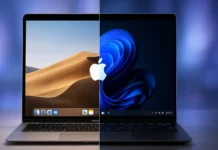Buying a laptop as a student is usually a very stressful experience. You don’t want to invest too much money in it, but you need something that can handle all your basic needs, like college assignments and watching movies.Here are some top tips for buying the best budget laptop for students that won’t break the bank.
What is a good laptop?
A college student’s laptop is an essential tool for getting work done. The average student spends close to 75% of their time engaged in technology, so it’s important you have a device that suits your needs. Here are some factors you should consider when choosing your next laptop for school.

Size and Weight
Laptop portability is typically prioritized by college students. Consider the size, power, and performance tradeoffs when choosing between smaller and larger devices. If you only plan to perform basic tasks like word processing, light, small, and simple laptops should suffice, but some students may prioritize screen size and faster processing power.
Unless you work in computer science or require a large screen and high performance for detailed tasks such as design work, an 11-to-13-inch laptop weighing less than 5 pounds should suffice.
Battery Life
All students should consider battery life when choosing a laptop for school. Most computers have a battery life of 8 hours to 10 hours on the low end, and 12-17 on the high end. However, smaller computers tend to offer longer battery lives and work more efficiently whilst higher performing laptops use more power and may therefore perform less efficiently while offering shorter battery lives.
Display and Resolution
Think about if you’ll need a huge display for your college experience. Students who use their computers primarily for web browsing and word processing are unlikely to require a huge monitor.
With so many recent technological breakthroughs in terms of resolution, even lower-priced laptop models increasingly tend to offer high-resolution displays. Most students should be able to use a 1080p resolution. Keep in mind that greater resolutions usually come at a higher cost.
RAM
The amount of random access memory (RAM) in a computer controls how many programs can execute at the same time. Most laptops and tablets begin with 4 GB of RAM, which is adequate for web browsing and word processing. Upgrading to 8 GB allows you to run many apps at the same time.
New computer programs often necessitate increasing memory usage, but your laptop’s RAM will remain constant, perhaps causing your machine to slow down over time. So, while 4 GB of RAM may enough when running simple applications, 8 GB is a superior long-term investment.
Processor
A processor, as the name implies, handles many of the primary processes of a laptop and is one of the most crucial components. Most users may get by with an entry- or mid-level processor, such as an Intel Core i3 or i5, but students who use more demanding applications, such as graphic or video editing, may benefit from a higher-level processor, such as an Intel Core i7 or i9.
Hard Drive and Storage
Your computer’s hard drive stores all of the digital information you create, which can vary in size and quality. A solid-state drive (SSD) has no moving components, thus SSD-equipped PCs are 3-4 times faster and more stable than regular hard drives. SSDs are frequently more expensive, however the increase in speed and performance usually justifies the increased price.
If your budget allows it, go with an SSD. If you choose a standard hard drive, search for the most storage space available at your pricing point. Standard hard drives normally provide at least 128 GB of storage space, while some students may want 250 GB or more.
Operating System
Most laptops are powered by either Windows or Mac OS, both of which provide full compatibility and functionality. In general, Windows PCs are less expensive and allow for more customization, whereas Macs are more expensive and include proprietary software.
For students who only need to do simple tasks like email and word processing, either operating system will suffice. Having said that, Macs are frequently regarded as superior laptops for university students who require specific operations, such as video editing.
Price
Laptops, like most gadgets, can vary greatly in price and quality. Less expensive models, in general, use less powerful technology that provides lesser performance, whereas more expensive models feature faster CPUs, accelerated graphics cards, larger hard drives, and more RAM.
Most students should be able to meet all school-related requirements using an entry-to-mid-level laptop (GHC2,000-GHC4,000). It should be noted that certain particular professions may require more powerful gear.
Conclusion: Choosing the right laptop can be a difficult task for students, especially if you’re on a budget. We hope that this article has helped you decide on the best laptop for your needs. If you have any questions regarding this topic , please leave a comment below and we will get back to you shortly.
Disclaimer
Techynotion.com does not host any files on its servers. All point to content hosted on third-party websites. Techynotion.com does not accept responsibility for content hosted on third-party websites and does not have any involvement in the same.



